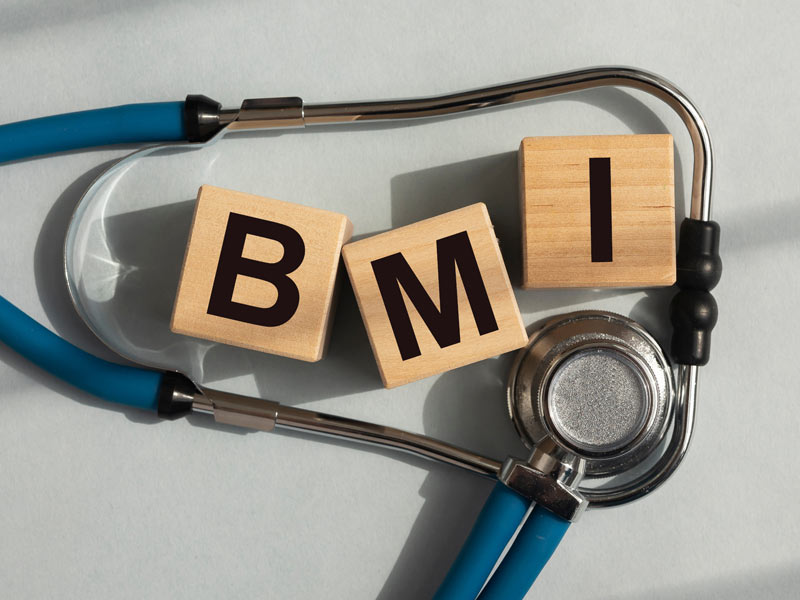Behavioral Interventions Encouraged for High BMI in Youth
Comments on Draft Recommendation Due Jan. 16
Jan. 8, 2024, News Staff — The U.S. Preventive Services Task Force is accepting public comments on an updated draft recommendation statement and draft evidence review on interventions for high body mass index in children and adolescents through Jan. 16.

The draft recommends, at a “B” level of evidence, that clinicians provide or refer children and adolescents 6 years or older with a high BMI (the 95th percentile for age and sex or higher) to comprehensive, intensive behavioral interventions with at least 26 contact hours with a health care professional over a year.
“There are proven ways that clinicians can help the many children and teens who have a high BMI to manage their weight and stay healthy,” task force member Katrina Donahue, M.D., M.P.H., said in a USPSTF bulletin. “Intensive behavioral interventions are effective in helping achieve a healthy weight while improving quality of life.”
Notably, the draft does not use the words “obesity” or “overweight.” Instead, the task force uses “high BMI” when referring to youth considered to have obesity according to CDC standards, sometimes including specific BMI cutoffs (for example, “85th to 95th percentile for age and sex”).
When finalized, the recommendation will replace the task force’s similar 2017 recommendation on the topic.
The new draft evidence review focused on two types of interventions for weight management: behavioral counseling and pharmacotherapy. Surgical weight loss interventions were not reviewed because the USPSTF considered them outside the scope of primary care.
The behavioral interventions included services such as education on healthy eating habits; counseling on behavioral change techniques like goal-setting and problem-solving; and supervised exercise sessions. Overall, after 6 to 12 months, behavioral interventions were associated with reduced BMI and other weight-related outcomes, and improvements in blood pressure and fasting plasma glucose levels. While the task force could not determine the individual benefits of specific intervention components, high-intensity behavioral interventions with more contact hours and physical activity sessions appeared to produce larger effects.
Story Highlights
“There are a variety of effective, evidence-based interventions that can help children and teens maintain a healthy weight,” task force member John Ruiz, Ph.D., said. “Health care professionals should work with children and their families to find the intervention that is the best fit.”
The task force also examined the evidence for several weight loss medications. Compared with placebo, pharmacotherapy was associated with larger mean reductions in BMI in most trials, with the largest effects seen after taking semaglutide or phentermine/toparimate for 13 to 16 months. However, weight loss medication use also was associated with moderate harms due to gastrointestinal symptoms such as fecal incontinence and gallstones, and some musculoskeletal and psychiatric adverse effects were observed with phentermine/toparimate.
Because of these harms, the task force encourages clinicians to promote behavioral interventions as the primary effective intervention for weight loss in children and adolescents. The task force also called for more research on long-term health outcomes of weight loss medication in this population.
More Research Needed
The task force noted several critical evidence gaps in the current research, and called for more studies on a number of topics, including
long-term health outcomes and benefits of behavioral and pharmacotherapy interventions,
long-term psychosocial harms of pharmacotherapy,
benefits and harms of healthy lifestyle or weight-neutral interventions in children and adolescents with a high BMI,
best timing for interventions and
maintenance of weight loss and assessment of long-term benefits and harms.
The task force said these gaps are particularly important to populations with the highest rates of high BMI, including Hispanic/Latino, Native American/Alaska Native and Black children and adolescents, and children from lower-income families.
Other Resources and Recommendations
The Academy offers information on helping children achieve a healthy weight on familydoctor.org, along with articles on related topics such as body image and self-esteem, developing healthy screen time habits and the importance of creating good nutrition habits early in life.
Other resources available through the Academy’s EveryONE Project can guide clinicians in addressing high BMI levels in both children and adults. These include a series of screening guides and tools family physicians can use to determine their patients’ social needs, and the Neighborhood Navigator, which connects patients with social resources in their neighborhoods.
In addition, the USPSTF published a summary of the updated draft recommendation that clinicians can share with patients and directed clinicians to resources from HHS and the Community Preventive Services Task Force.
The task force has also issued several related recommendations on children and adolescents, including screening for high blood pressure, lipid disorders, and prediabetes and type 2 diabetes.